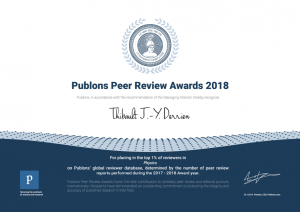Application for permanent position
In early January 2018, I applied for a CNRS Junior Researcher position (Section 04/03: atoms, molecules, plasmonics) and reached the last stage of selection: oral presentations. Over 88 submitted applications, 33 people were interviewed. Only 10 people were kept in the priority list, where only 1 person got permanent position at CNRS.
Accepted MSCA RISE project proposal
In early 2018, I participed in drafting a RISE Marie Curie proposal named ATLANTIC. It has been selected for funding on June 18th. We are preparing the Grant Agreement phase. The project counts 13 partners in the world and an average budget of 950,000 € including 100,000 € for Hilase Centre for training young scientists in advanced theoretical modeling for laser-matter interaction. More details will be given when Grant Agreement will be signed.
Submitted a Czech proposal
In April 2018, we submitted jointly with Prof. Gurevich (RUB, Germany) and Dr. Yoann Levy (HiLASE Centre, Czech Republic) a joint DFG/GAČR proposal where both Prof. Gurevich and Dr. Derrien are principal investigators.
Accepted conference proceeding
In June 2018, a joint conference proceeding on the excitation of surface plasmon polaritons in lossy materials was accepted for publication in Journal of Physics: IOP conference series (IOP).
Accepted publication with Jena University
In July 2018, we submitted a joint research publication with Dr. Stephan Gräf from Jena University. This publication was promised in the MSCA QuantumLaP final report.
It is now accepted for publication in Materials, Impact factor 2.7.
Preparation of several publications
Several publications promised in the final report are under preparation. Stay tuned!
Future plans
Preparation of ERC starting grant is on the way.

 After having reported these results in international conferences (AES 2017 South Korea, COLA 2017 France, Ultrafast Optics 2017 Moscow), having been published in Czech public media (Novinky.cz, Technical Weekly CZ, Ceske Televize 24), it was time to report this success story at the HiLASE Centre (FZU Prague). The seminar duration was 45 minutes and the time was shared between T.J.-Y. Derrien, Y. Levy and I. Mirza.
After having reported these results in international conferences (AES 2017 South Korea, COLA 2017 France, Ultrafast Optics 2017 Moscow), having been published in Czech public media (Novinky.cz, Technical Weekly CZ, Ceske Televize 24), it was time to report this success story at the HiLASE Centre (FZU Prague). The seminar duration was 45 minutes and the time was shared between T.J.-Y. Derrien, Y. Levy and I. Mirza. Dr T. J.-Y. Derrrien has been invited by Bochum University (Germany) to provide 30 hours of lectures on the topic of Plasmonics, as a block-lecture course for the Erasmus Mundus Master program named “Laser Technologies and Photonics.” A written exam is planned in early March and about 10 people are expected.
Dr T. J.-Y. Derrrien has been invited by Bochum University (Germany) to provide 30 hours of lectures on the topic of Plasmonics, as a block-lecture course for the Erasmus Mundus Master program named “Laser Technologies and Photonics.” A written exam is planned in early March and about 10 people are expected.